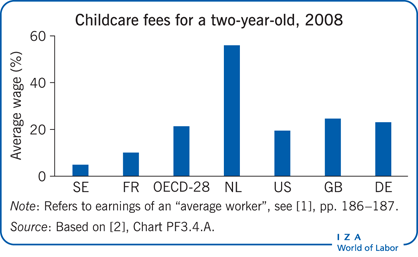Elevator pitch
Most public expenditure on childcare in the US is made through a federal program, the Child Care and Development Fund (CCDF), established as part of landmark welfare reform legislation in 1996. The main goal of the reform was to increase employment and reduce welfare dependence among low-income families. Childcare subsidies have been effective in enabling parents to work, but apparently at some cost to the well-being of parents and children.

Key findings
Pros
The CCDF childcare subsidies increase employment among low-income parents.
The subsidies encourage parents to invest in their own potential by engaging in educational and job-training activities.
To the extent that childcare subsidies encourage human capital investment, they may lead to long-term economic self-sufficiency.
Childcare subsidies coupled with an employment requirement facilitate the move from welfare to work among low-income parents.
Cons
The way the CCDF is designed to operate may discourage low-income parents from looking for, and providers from offering, high-quality care.
Signature features of the current childcare policy (the work requirement and the relative freedom of parents to choose carers) appear to have adverse effects on the well-being of children.